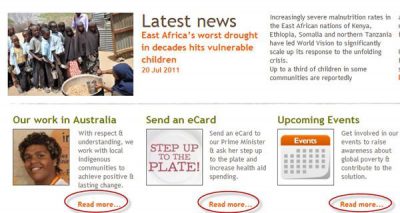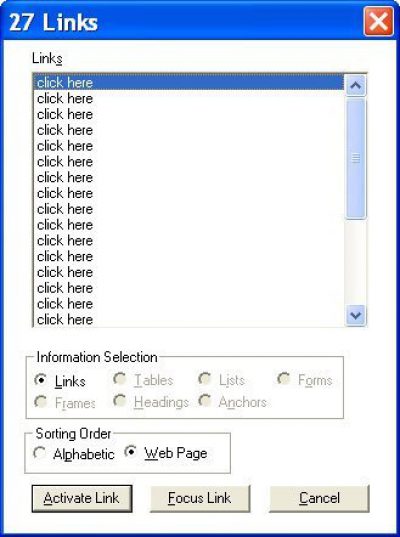Link purpose - accessibility for web writers
Write links that clearly describe their purpose or content. Meaningful links are vital for making content more accessible to people with disabilities.
Benefits of descriptive link text
Meaningful links are important for people with:
- vision impairments who use a screen reader. Many people tab through the links on page, or open a 'links list'. When doing this, only the link text is read out to them. Ambiguous links like 'click here' and 'read more' are not helpful.
- low vision who use screen magnifier software. If a link is clearly described, they will not have to scroll around text near the link to figure out where it leads. This will save them time and effort, and reduce the chance of them clicking on links that are not relevant.
- reading or cognitive limitations. Ambiguous links can be confusing or distracting. Meaningful links will reduce these problems and save time that would otherwise be lost by following irrelevant links or overlooking the relevant ones.
- mobility impairments who cannot use or control a mouse well. They may waste a lot of energy moving through a page just to click on a misleading links. Well-written links will limit this.
Descriptive links are also important for:
- people who skim over your page. They usually stand out on a web page (as they're a different colour and underlined), so anyone who can see the page can scan it and identify the linked content.
- search engine optimisation.


Writing better links
- Use meaningful words, particularly keywords (terms users are likely to search with)
- Place keywords as close to the start of the link as possible
- Avoid using URLs as the labels for links
- Use the email address as the link text for mailto links
- Avoid using the same link text for links that lead to different places
- Keep links concise while including enough information to identify the linked resource
- Position links carefully within content so the content is easy to scan-read
- Warn users, within the link, when links will open documents (PDF, Word and so on)
- Avoid opening links in new windows, except for documents and help text
- Only include links that are directly relevant to the tasks users may be doing. Don't overwhelm users with too many choices
References
- Link purpose (in context) - understanding success criterion 2.4.4
- Link purpose (link only) - understanding success criterion 2.4.9
- Web Content Accessibility Guidelines 2.0
Next article in this series
Learn web content accessibility
Make sure a broad audience can use your content. Our course teaches how to create content that meets WCAG 2.1 guidelines.
Book a course at https://4syllables.com.au/